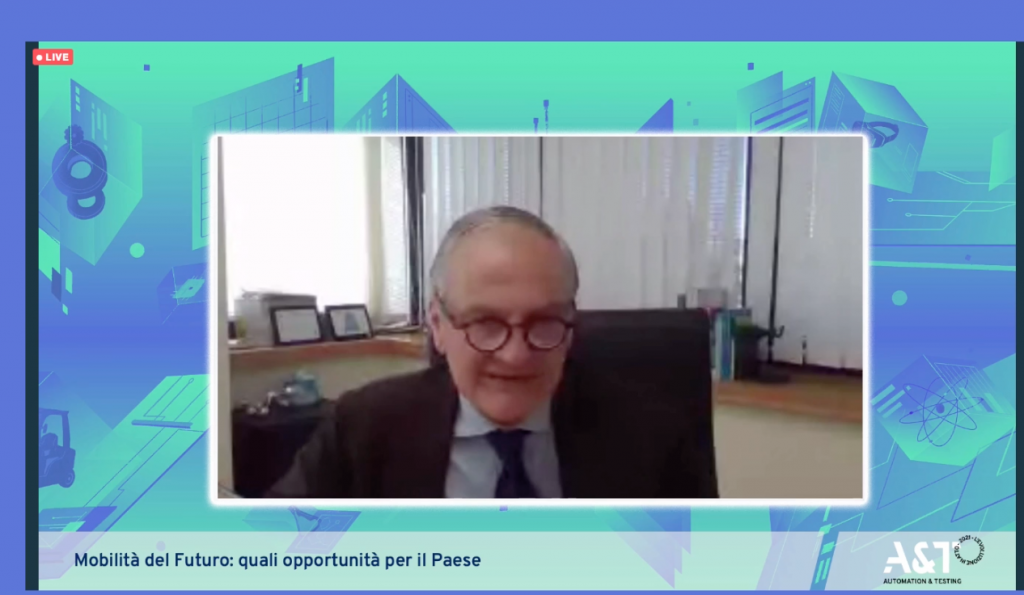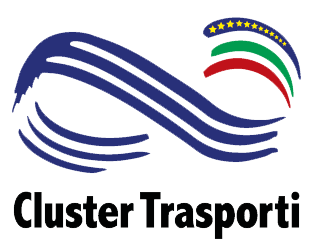“Mobility of the future: which opportunities for the country”: Cascetta, “An Italian way to the seventh industrial transport revolution”

Published 11 February 2021
“The seventh transport revolution is underway, a profound new paradigm shift in world technology.” With these words Ennio Cascetta, president of the Cluster Trasporti, opened the round table “Mobility of the future: which opportunities for the country” in the digital setting of the 5th edition of the A&T International Fair – Automation & Testing, dedicated to Innovation, Technologies and Skills 4.0.
Global geopolitical blocks such as USA, China and Europe are putting in place large investment programs that involve companies in the automotive, railway and naval sectors but also the world of public research.
Globally, three major strands are interacting with each other: artificial intelligence technologies, decarbonization and the transformation of mobility services. Three major trends that will produce the seventh transport revolution.
“Europe plays an important role in this great era of change, defining its interest also thanks to programs such as Horizon and Next Generation EU. Many resources will finance the public share of research for the transport revolution and Italy also plans to move large resources including 209B € b from the Next Generation fund “.
How will these funds be used? Cascetta affirms that it is necessary to understand if there is an “Italian way” to the seventh industrial revolution, or if it is possible to define general system interests with a financing channel that does not represent a simple sum.
“In the past, great strides have been made for the transport, automotive and ITS sectors. This national vision, however, has been interrupted in the last twenty years: today, through the Cluster, there is the possibility of representing something beyond the legitimate interests of each company and each research group. We have identified a broader vision in this sense, a document that can represent the Italian interest in the field, for example, of hydrogen, methane or mobility as service traction. We are living in a decisive moment for the transport sector on a global level: all these changes are now unpredictable and it is important to define an Italian way, in the wake of the European one but with its own specificities to enhance the country’s excellence in a way that is systemic and not additive”.
Some major players in the transport sector took part in the round table: Roberto Fedeli – Fiat Research Center, Pierangelo Decisi – Anfia, Valter Alessandria – vice president of Alstom Ferroviaria and Rossella Panero, president of TTS Italia.
“Today the common enemy is pollution, but it is not easy to choose a single technology: the industry is not prepared to decline everything with a single answer. We must try to mix in order to respond to the request for a different mobility paradigm – explained Decisi -. Furthermore, we cannot only look at the regions of the world that are experiencing full development. Electricification is certainly in the future of all plans that look to the future of transport, but the endothermic still has its role “.
In urban areas, Italy has far fewer kilometers of tram and metro networks than many European countries. Public transport consists of a fleet of buses that are on average 5 years older than the European average. Based on this, Alstom is working to improve urban transport with the “Unbottle cities” project, identifying a series of tram lines. On the regional lines, however, the company is implementing a decarbonization program by electrifying the lines or putting hydrogen trains on the tracks, as in the project recently inaugurated in Lombardy with the 1st Italian Hydrogen Valley. High speed is also part of Alstom’s strategy, which aims to replace older trains and strengthen the network.
Panero, president of Tts Italia, focused on the need to enhance Italian excellence in the Recovery Plan. “We are experiencing an important phase of change and we believe in the possibility of revolutionizing transport thanks to funds from Recovery, a possible springboard for smart mobility. TTS Italia’s proposals for the digitization of transport services are in line with EU strategies and thanks to the new resources we can imagine a concrete application. Big data, electric mobility, smart roads and autonomous vehicles: a national plan is needed to harmonize experimentation with new technologies. This sector can be the real protagonist of the revolution”.
Fedeli focused his attention on megacities and on the needs dictated by large numbers: “Electricity will not be able to completely solve the CO2 emissions problem. The big challenges relate to electrification and autonomous driving, but the entire automotive world cannot be fully electric. Traditional engines will become hybrids, others will be born completely electric. But internal combustion engines will continue to run for a number of years. Italy must focus on training and research “.
“We need an ‘ecological approach’ – concluded Cascetta – that refers to the different sources of energy. Scientific and industrial communities must contribute to a more balanced vision in which ecological neutrality is supported and motivated by rational principles, rather than assuming that one technology is more sustainable than another. It is also important to reiterate that the markets for mobility vehicles and services give indications: indiscriminate financing is not functional, a vision of the system with a stronger integration between design and market needs is instead necessary “.


